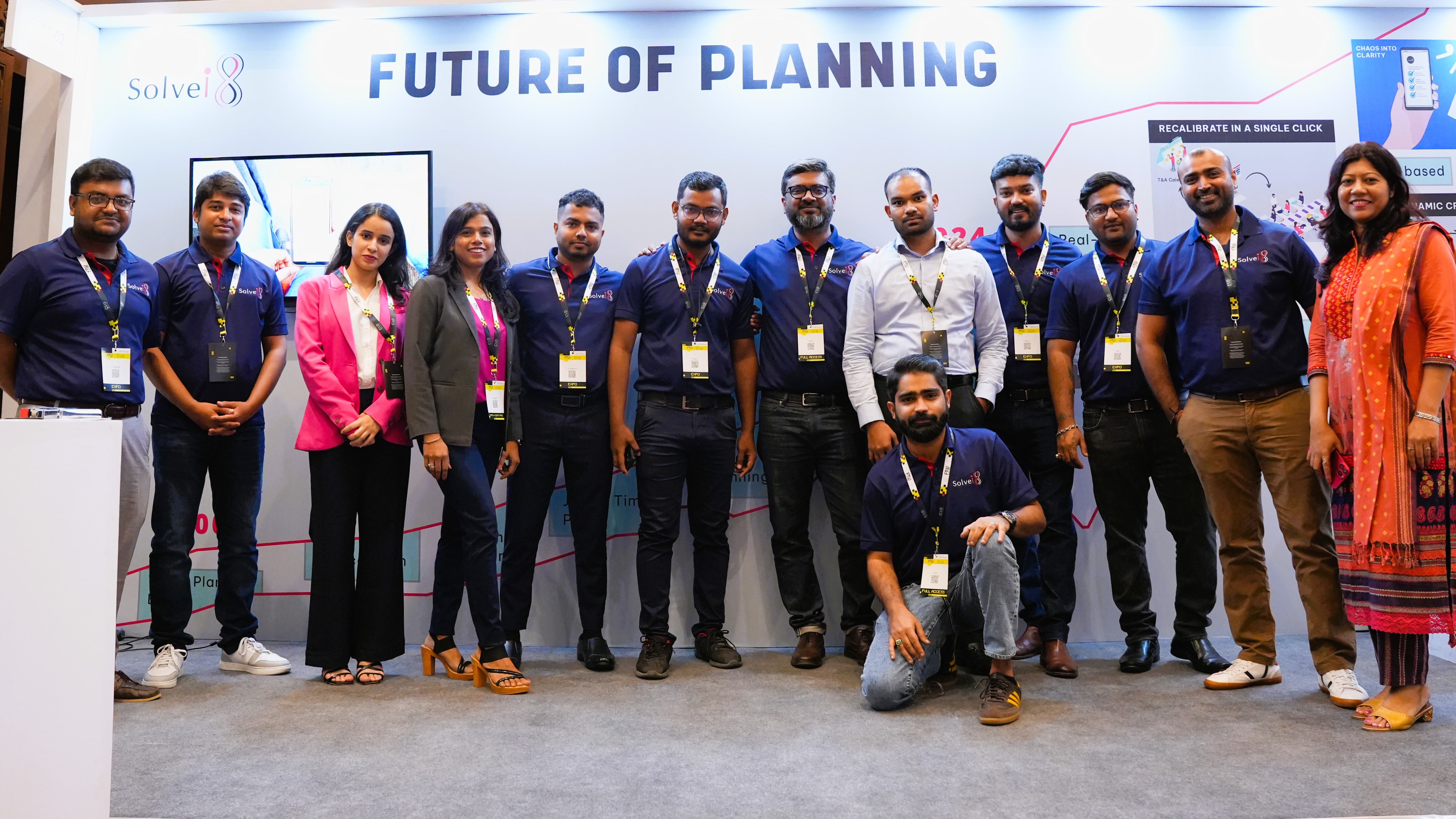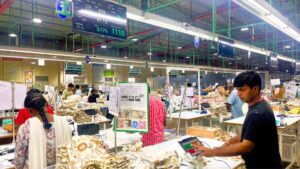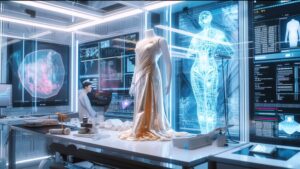 In the ever-evolving landscape of apparel manufacturing, efficiency and accuracy in planning are crucial. Enter Plani8, a cutting-edge solution developed by Solvei8 to address the growing challenges faced by factory planners
In the ever-evolving landscape of apparel manufacturing, efficiency and accuracy in planning are crucial. Enter Plani8, a cutting-edge solution developed by Solvei8 to address the growing challenges faced by factory planners
From automating redundant tasks to integrating seamlessly with other systems, Plani8 is designed to revolutionise the planning process, ensuring that the apparel industry keeps pace with modern production demands. This article explores the key features of Plani8, the challenges overcome during its development and the unparalleled support offered to planners adopting this innovative tool.
AR: Can you tell us about Plani8 and what inspired its development?
Anuj: One of the primary user groups for our other product, Tracki8, was planners. Their role involved uploading the daily plan into Tracki8, our MES solution, to track plan vs. actual progress and monitor order status across all departments. Through direct interaction with planners and observations during monthly review meetings with our clients, two critical issues became evident:
– Over 80% of orders are delayed before they even reach the production floor.
– Regular plan updates were so cumbersome that planners would update the plan only once a week, or even less frequently.
These insights highlighted that the current planning mechanisms, whether existing tools or manual methods, are fundamentally flawed. The systems in place were designed for an industry that operated 20 years ago, when lead times of 90-120 days were typical. Today, lead times are shrinking to 30 days or less, and supply chain volatility is increasing, making the demands on planners significantly more complex. An average planner, managing 3-4 factories with around 100 production lines, is now required to plan for at least 50 orders each month, if not more. Each order involves approximately 15 activities across multiple stakeholders, meaning the planner must track around 750 activities monthly to ensure production stays on schedule. Current systems lack the necessary automation to handle this level of complexity, forcing planners to track only a limited 5-6 activities of the TnA. This limitation is a major reason why 80 per cent of delays occur; manually tracking every activity with current systems is simply unfeasible.
This is precisely why we developed Plani8: to reduce the workload on planners, automate redundant processes and equip the apparel industry with a planning solution that meets the demands of modern production timelines and technological advancements.
AR: How does Plani8 differentiate itself from other planning tools currently available in the market?
Anuj: Plani8 is the only tool in the market that leverages cutting-edge technology and a cloud-native, service-oriented architecture. Unlike other solutions, Plani8 reduces the planning effort by over 80 per cent, providing unmatched efficiency and accuracy. It’s the only tool designed specifically to meet the evolving demands of the modern apparel industry, offering planners a streamlined, automated solution that outperforms traditional systems in every aspect.
AR: What are the key features and functionalities of Plani8 that you believe will revolutionise planning in apparel manufacturing?
Anuj: During our research, we identified a significant gap in the industry – the absence of an effective critical path management tool – which has consistently led to delays in final shipment deliveries. To address this, we focused on developing a planning solution with critical path management at its core.
We created a critical path builder that enables planners to develop customised templates for various buyers with different lead times. Once a critical path is assigned to an order, it automatically triggers to-do items as push notifications on the Plani8 mobile application, allowing users to interact and update the organisation on their assigned activities. Additionally, we have integrated key activities such as PO confirmation, fabric in-house, trim in-house,etc., directly with ERP systems or any existing solutions, eliminating redundant data entry.
Both mobile application-based user interaction and API-based integration with existing solutions empower planners to re-draw the critical path based on the latest updates. It’s crucial to understand that the critical path evolves over time. Current market solutions or manual Excel-based systems are insufficient for managing dynamically evolving critical paths. Plani8 has been specifically designed with dynamic critical path management at its core.
AR: What were the biggest challenges faced during the development of Plani8 and how were they overcome?
Anuj: At Solvei8, ease of use is a core principle of our product development process. Achieving this in Tracki8 and Maintaini8 was relatively straightforward, as users of those solutions had limited tasks to perform. However, designing Plani8 posed a greater challenge. The central user, a factory planner, has numerous activities to manage, making intuitive navigation a complex task. Thanks to the uncompromising dedication of our product development and consulting teams, who consistently asked the tough questions, we ensured that Plani8 was built with the planner at its core. A noteworthy fact is that 80 per cent of the team involved in developing Plani8 had previously worked as planners in a factory, bringing invaluable firsthand experience to the table.
The second major challenge was creating a robust on-cloud planning solution. Building a solution on an on-premise server is easier, as latency is rarely an issue and complex calculations can be performed on a dedicated server, delivering results on the front end in milliseconds. However, replicating or even improving this level of responsiveness on the cloud required innovation. Our technology team rose to the occasion, conducting extensive research to develop a solution that delivers better on-screen responsiveness than traditional on-premise systems. This is the true behind-the-scenes innovation that our team has achieved.
AR: How does Plani8 integrate with other solutions provided by Solvei8 and what synergies can customers expect?
Anuj: Plani8 is not just deployed on the cloud; it is designed on the cloud. One of the advantages of being designed on the cloud is having APIs for seamless integration with both our existing solutions and external systems. From day one, Plani8 offers the capability to integrate with any solution. While we provide integration across various platforms, there are distinct advantages to using all solutions from Solvei8.
For instance, using Tracki8 as an MES to monitor production and order progress, alongside Plani8 as the planning software, allows the plan to be recalibrated in real-time with just a single click. The planner can view the real-time performance of the factory directly from Plani8. Although Plani8 can also integrate with other MES solutions through an API, recalibration is limited to twice a day update only.
Furthermore, Plani8’s integration with Maintaini8, our TPM-based asset and downtime management tool, enables planners to understand the machines required based on confirmed orders within Plani8. This integration also helps identify machine shortages/excesses well in advance, ensuring the best machine utilisation in an organisation.
AR: What kind of training or support is available to planners using Plani8 and how quickly can they expect to see improvements in their planning practices?
Anuj: Plani8 is designed to be as intuitive as possible, minimising training time for users. However, at Solvei8, we provide three levels of training based on project complexity and client needs:
- Comprehensive Training: For complex processes or first-time digital solution onboarding, this level offers not only software training but also business process reengineering to ensure a smooth transition.
- Virtual Onboarding: This level provides 24×7 support from our online consultants, focusing on software training without engaging in business process re-engineering.
- LMS Platform: Our dedicated LMS platform allows organisations to train themselves and includes support for the first two levels. It features a video library and FAQs for ongoing assistance.






